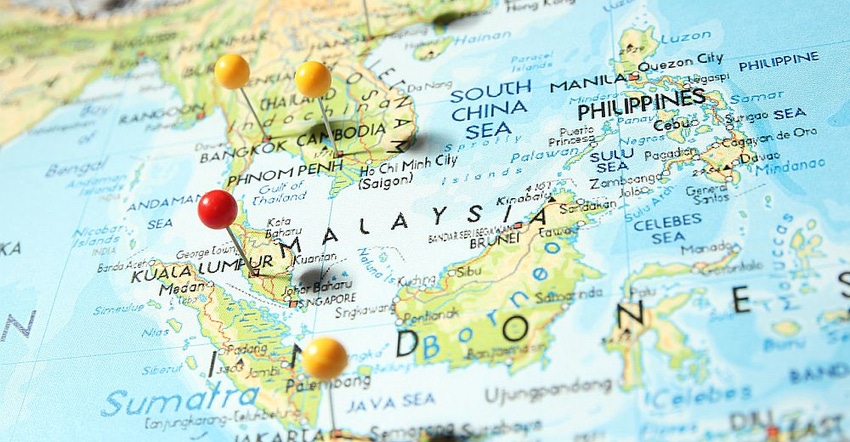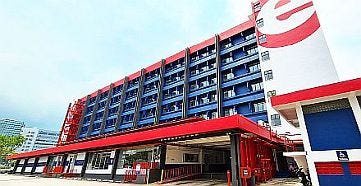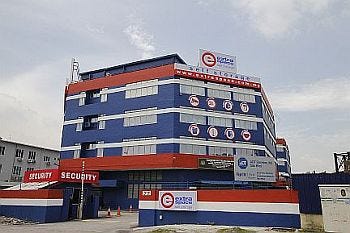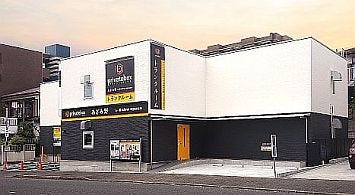Self-storage has been growing steadily across Southeast Asia for more than a decade. Read what’s driving the market, challenges industry professionals face, and how storage poised for a bright future in the region.
July 1, 2021

The demand for self-storage in Southeast Asia has been growing steadily. Land is becoming scarce as cities become more densely populated, and the average house size is shrinking. As a result, many consumers are beginning to turn to self-storage as an affordable solution to their lack of space.
It’s likely that demand will remain, as storage is an essential need for many, whether for personal or business use. Here are some other things driving the market in the region:
Land costs. Prices for residential, retail and industrial real estate have been on the rise for several years, and in response, self-storage has slowly transformed into a commodity. The industry offers a cost-effective alternative for the public’s growing need for space away from home and business offices.
Remote work. People in Southeast Asia are spending a lot more time working from home and looking for ways to make their living space less cluttered. Furniture and belongings that are rarely used are being moved to storage units to create more functional workspace.
Consumer awareness. The public’s awareness and understanding of self-storage is expected to increase steadily, especially among younger consumers (Millennials). This trend also coincides with a rising number of start-up businesses including e-commerce ventures.
Office space. Businesses that aren’t performing as well as forecasted are trying to minimize costs by using the least real estate required. Many like the flexibility of self-storage, as it allows them to increase or downsize the amount of space they buy based on need. This also frees them from being tied to long-term leases.
Business closures. As a result of the COVID-19 pandemic, some businesses have closed, and there’s a need for places to store the remaining assets such as furniture, equipment, documents, etc. Many owners hope they’ll be able to resume their business once there’s more economic security.

Pandemic Impact
Overall, the self-storage industry in Southeast Asia has been fortunate to experience little negative impact from the global health crisis. In fact, the occupancy rate for our company, Extra Space Asia, has steadily risen since the beginning of the pandemic. Though we may have lost some customers who could no longer afford to rent, we’ve gained many new residential and business tenants.
There’s been a particular uptick in the number of homeowners creating workspace in their residences as well as budding entrepreneurs who need temporary storage for inventory. We’ve also rented space to non-essential businesses that aren’t allowed to operate during lockdown but require somewhere to store inventory, equipment and so on.
In times of crisis, there’s always opportunity. The growing demand for self-storage means we haven’t had to reduce manpower or worker pay. Moreover, our plans to expand within the countries in which we operate have actually been expedited. As a result, we’re scheduled to open several new facilities across Southeast Asia in the coming months.

Development Trends
Most new self-storage development in Southeast Asia comes in the form of building conversions. In our case, we’ve only built two ground-up projects, both in Japan. Generally, conversions are a smart choice because they require less time to go to market. Developing from scratch requires a lot more effort.
Leasing has also become a popular concept for self-storage development here. The general availability of industrial space near residential areas is a plus. In Singapore, we have a good mix of facilities that are leased vs. owned (conversions), while in Hong Kong and Taiwan, all our facilities are leased. Due to heightened demand, we’ve also shifted some focus to expanding our existing sites where possible.

But whether you’re converting or leasing, the building fit-out is expensive. So are the initial capital costs when acquiring a property. Most self-storage facilities take several years to begin generating positive cash flow, which means owners must finance accordingly.
Public Awareness
Though consumer awareness of self-storage has risen steadily during the last decade, educating the public remains one our biggest obstacles. Many people still don’t fully understand the concept and have the mistaken belief that the industry hinges on shared warehouse space. Our challenge is to help them understand that both sectors have their own unique offerings, and unlike warehousing, self-storage allows 24/7, unsupervised access to personal space with security. They’re frequently surprised at how cost-effective it is.

Technology Adoption
As an industry pioneer in Asia, we’ve used technology to enhance the customer experience, particularly during the pandemic, as consumers now prefer less face time and expect faster transactions. Changes include offering the convenience of reserving storage units online with the help of telecommunication tools and videos. This has saved them travel time, and they enjoy the ease of selecting their preferred unit anytime, from anywhere.
Technology has also played a big part in helping us maintain a competitive edge. We’re currently developing a Customer Experience Portal (mobile app) that will provide tenants with access to their accounts at the click of a button. They’ll also be able to make payments and take advantage of a rewards program with more than 50 participating merchants. The idea isn’t just to enhance the experience but to simplify it, ensuring the storage journey is seamless and hassle-free
We’re also the first self-storage operator in Asia to use smart locks on our unit doors. Customers can now unlock their space using a mobile app and even share a time-limited virtual key with a third party. The app also provides information on their unit-access history.
The Future
Self-storage will continue to make inroads with residential and business customers in Southeast Asia. As the number of facilities increases, customers will enjoy greater convenience and accessibility, without having to travel far to visit their unit.
With the rapid advancement of technology, we believe future storage sites will be smaller, fully automated and unmanned, similar to laundromats. Customers will be able to sign-up more easily online or onsite via a self-service device, with documentation and payments processed nearly instantaneously. They’ll be able to move in at their discretion, with the click of a few buttons. In the long run, this’ll help industry operators plan and allocate manpower and resources more effectively.
We also expect conservation efforts and corporate social responsibility to increase. As part of our commitment to a greener future, Extra Space Asia was the first self-storage operator in Singapore to install solar-photovoltaic systems atop several facilities. Within three years, this initiative will help decrease our daily energy consumption and reduce our CO2 emissions. We’ve also changed most of our lighting to LEDs as part of this effort.
Extra Space Singapore Holdings Pte. Ltd. offers self-storage services to residents and businesses in densely populated Asian cities. Extra Space Asia operates 57 facilities across Japan, Hong Kong, Malaysia, Singapore, South Korea and Taiwan, comprising more than 1.3 million square feet of space.
About the Author(s)
You May Also Like





